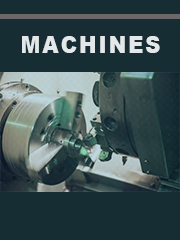TOP CATEGORY: Chemicals & Materials | Life Sciences | Banking & Finance | ICT Media

Download Report PDF Instantly
Report overview
The global Rubber Injection Machinery market was valued at US$ 540.9 million in 2022 and is projected to reach US$ 646.7 million by 2029, at a CAGR of 2.6% during the forecast period. The influence of COVID-19 and the Russia-Ukraine War were considered while estimating market sizes.
The USA market for Global Rubber Injection Machinery market is estimated to increase from USD million in 2022 to reach USD million by 2030, at a CAGR during the forecast period of 2023 through 2030.
The China market for Global Rubber Injection Machinery market is estimated to increase from USD million in 2022 to reach USD million by 2030, at a CAGR during the forecast period of 2023 through 2030.
The Europe market for Global Rubber Injection Machinery market is estimated to increase from USD million in 2022 to reach USD million by 2030, at a CAGR during the forecast period of 2023 through 2030.
Rubber Injection Machine is a machine for the production of rubber molded products. Mainly used in the production of rubber molded products, such as electrical insulation parts, shock pads, seals, soles, industrial rain boots, etc.
This report aims to provide a comprehensive presentation of the global market for Rubber Injection Machinery, with both quantitative and qualitative analysis, to help readers develop business/growth strategies, assess the market competitive situation, analyze their position in the current marketplace, and make informed business decisions regarding Rubber Injection Machinery. This report contains market size and forecasts of Rubber Injection Machinery in global, including the following market information:
Global Rubber Injection Machinery Market Revenue, 2018-2023, 2024-2030, ($ millions)
Global Rubber Injection Machinery Market Sales, 2018-2023, 2024-2030, (Units)
Global top five Rubber Injection Machinery companies in 2022 (%)
But, China is the largest supplier in volume with share over 39.4% in 2019. The whole market is highly concentrated, top 10 players account for about 76.9% of total revenue in 2019.
We surveyed the Rubber Injection Machinery manufacturers, suppliers, distributors and industry experts on this industry, involving the sales, revenue, demand, price change, product type, recent development and plan, industry trends, drivers, challenges, obstacles, and potential risks.
Total Market by Segment:
Outline of Major Chapters:
Chapter 1: Introduces the definition of Rubber Injection Machinery, market overview.
Chapter 2: Global Rubber Injection Machinery market size in revenue and volume.
Chapter 3: Detailed analysis of Rubber Injection Machinery manufacturers competitive landscape, price, sales and revenue market share, latest development plan, merger, and acquisition information, etc.
Chapter 4: Provides the analysis of various market segments by type, covering the market size and development potential of each market segment, to help readers find the blue ocean market in different market segments.
Chapter 5: Provides the analysis of various market segments by application, covering the market size and development potential of each market segment, to help readers find the blue ocean market in different downstream markets.
Chapter 6: Sales of Rubber Injection Machinery in regional level and country level. It provides a quantitative analysis of the market size and development potential of each region and its main countries and introduces the market development, future development prospects, market space of each country in the world.
Chapter 7: Provides profiles of key players, introducing the basic situation of the main companies in the market in detail, including product sales, revenue, price, gross margin, product introduction, recent development, etc.
Chapter 8: Global Rubber Injection Machinery capacity by region & country.
Chapter 9: Introduces the market dynamics, latest developments of the market, the driving factors and restrictive factors of the market, the challenges and risks faced by manufacturers in the industry, and the analysis of relevant policies in the industry.
Chapter 10: Analysis of industrial chain, including the upstream and downstream of the industry.
Chapter 11: The main points and conclusions of the report.